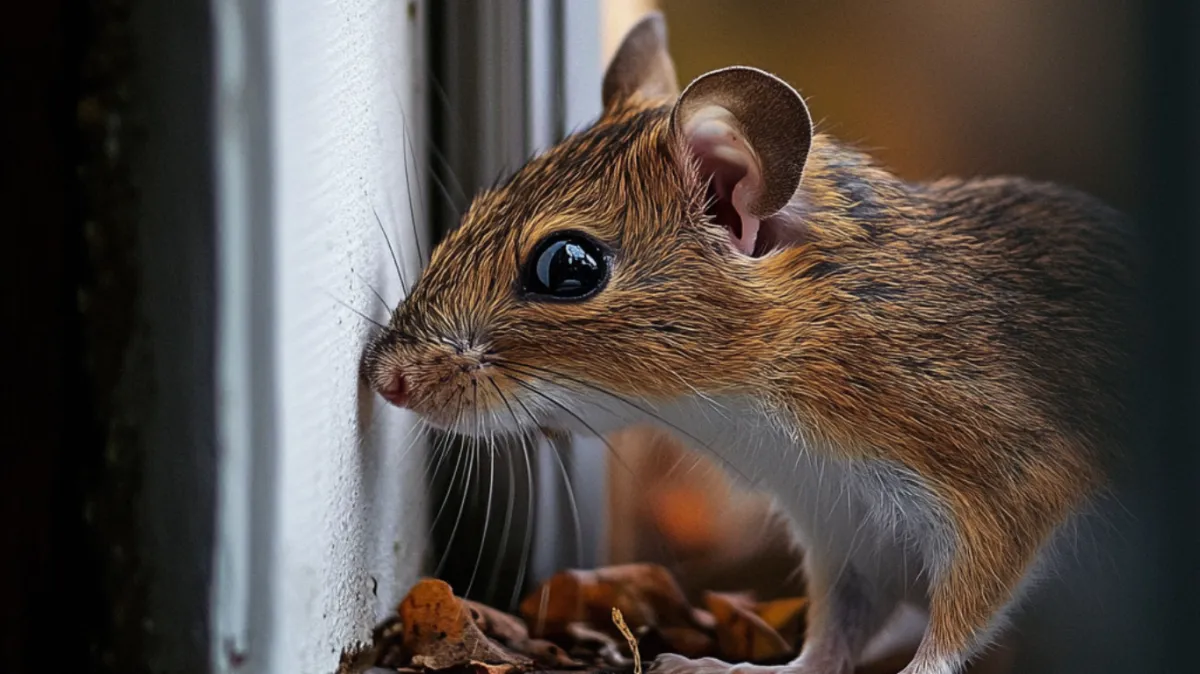Designed To Educate, Motivate & Inspire
The Western Way Journal

Fall Pest Preparation: Anticipating Cooler Weather Invaders
Understanding the Threat
Cooler temperatures drive pests indoors in search of warmth and food, making your home an ideal sanctuary. Common fall pests include mice, rats, spiders, and even cockroaches, each posing different risks to the health and safety of your household.
Seal Entry Points
The first line of defense is to prevent pests from entering your home. Conduct a thorough inspection of your home’s exterior:
Seal cracks and holes along the foundation, around windows, and doors with high-quality caulk.
Install door sweeps and repair damaged screens to block entry from even the smallest pests.
Tidy the Yard and Exterior
Pests often hide in cluttered areas before making their way indoors:
Trim overhanging branches that provide easy access to your roof.
Clear debris and leaf piles close to your home.
Store firewood at least 20 feet away from your house to prevent harborage of pests like spiders and ants.
Optimize Home Environment
Reducing indoor attractants is key to keeping pests out:
Store food in airtight containers and dispose of garbage regularly in sealed receptacles.
Fix leaky pipes and faucets to eliminate moisture build-up which attracts pests like cockroaches.
Health Risks Associated with Common Fall Pests
Understanding these risks is crucial for prioritizing effective pest control measures.
Rodents like mice and rats are notorious carriers of diseases, which they can transmit directly through their droppings, urine, or bites, or indirectly via fleas and ticks that feed on them. Diseases such as hantavirus pulmonary syndrome, leptospirosis, and salmonellosis are serious health threats associated with rodent infestations. Rodents also pose risks by contaminating food sources and cooking surfaces, which can lead to food poisoning.
Cockroaches are another common fall pest that can cause health issues, especially in individuals with asthma and allergies. The allergens found in cockroach droppings, saliva, and decomposing bodies can trigger allergic reactions and exacerbate asthma symptoms, particularly in children. Furthermore, cockroaches are carriers of multiple pathogens, including E. coli and salmonella, which can lead to gastrointestinal diseases.
Spider, while generally less harmful, can still pose risks, especially from species like the brown recluse or black widow, whose bites may require medical attention. Even non-venomous spiders can induce fear and anxiety in many people, impacting mental well-being.
To safeguard your home and health this fall, it's essential to implement timely and proactive pest control strategies. Regular home inspections, sealing entry points, maintaining cleanliness, and using appropriate pest deterrents can significantly reduce the risk of pest-related health issues.
Landscaping Tips to Deter Pests
Effective landscaping is a powerful strategy to prevent pests from invading your home, especially as the weather cools and they seek new shelters.
Choosing the Right Plants: Some plants are naturally repellent to pests due to their strong scents or chemical compositions. For instance, marigolds emit a smell that deters various insects, including mosquitoes and aphids, while lavender can help keep fleas and ticks at bay. Incorporating these plants into your garden can reduce the attractiveness of your space to pests.
Pest-Resistant Mulches: While traditional wood mulch can attract pests like termites and ants, opting for cedar mulch can be a more resistant alternative. Cedar oil is a natural insect repellent, making cedar mulch less inviting to pests. Alternatively, rubber mulch, made from recycled tires, is another option that does not attract termites or other wood-loving pests.
Proper Placement of Plants and Decorations: Positioning is crucial when it comes to landscaping for pest prevention. Keep trees, shrubs, and other plants trimmed and away from touching your home’s exterior to eliminate "bridges" that pests might use to enter your house. Additionally, place decorative elements such as mulch, rocks, and garden beds at least a few feet away from the foundation to discourage pests from moving closer to your home.
Maintaining a Clean and Dry Yard: Ensure your yard is well-drained and free of standing water, which can attract mosquitoes and other water-loving pests. Regularly clean your gutters and downspouts to prevent water accumulation near your home’s foundation, which can attract ants and termites. Keeping your yard tidy by removing fallen leaves and debris can also minimize hiding spots for pests.
DIY Fall Maintenance Checklist
This DIY Fall Maintenance Checklist provides key tasks you can undertake to keep your home pest-free:
1. Cleaning Gutters and Downspouts: Fall brings leaves and debris that can clog your gutters, creating standing water and moist environments that attract pests like mosquitoes and rodents. Clean your gutters and ensure downspouts direct water away from your home’s foundation to prevent unwanted guests.
2. Securing Trash Bins: Pests such as rodents, ants, and raccoons are attracted to food waste. Secure your trash bins with tight-fitting lids and store them away from your home’s entry points. Regularly clean the bins and the area where they are stored to minimize odors that attract pests.
3. Maintaining the Landscape: Trim trees and shrubs back from the house to prevent pests from using them as bridges to enter your home. Remove leaf litter, stacks of wood, and other debris where pests could nest. Keep your lawn mowed and plants well-trimmed.
4. Sealing Cracks and Openings: Walk around your home and inspect for any cracks or openings in the foundation, around windows, doors, and utility entries such as pipes and wires. Seal any gaps with appropriate materials like caulk or steel wool, which pests cannot chew through.
5. Checking Ventilation: Ensure that attics, basements, and crawl spaces are well-ventilated to reduce humidity levels. Moist environments can attract pests like termites, spiders, and cockroaches. Consider using dehumidifiers in particularly damp areas.
6. Inspecting Outdoor Furniture and Equipment: Before storing any outdoor furniture or equipment for the winter, thoroughly clean and inspect them for signs of pest activity. Cover and store items in a dry, secure place to prevent pests from taking up residence.
7. Updating Weather-stripping and Door Sweeps: As temperatures drop, mice and insects may seek warmth inside your home. Check and replace any worn weather-stripping around windows and doors. Install door sweeps to close gaps under exterior doors.
8. Storing Seasonal Decor Safely: Pests can often be found in stored decorations, especially items kept in attics or basements. Use sturdy, sealed containers to store seasonal decor and check items for pests before bringing them into living areas.
Professional Pest Proofing Services
While DIY methods can help, professional pest control services offer comprehensive solutions to ensure your home remains pest-free through the fall and beyond:
Customized treatments tailored to specific pests and your home’s unique needs.
Regular inspections to identify potential risks and address them promptly.
Why Choose Professional Help?
Professionals not only address current infestations but also use integrated pest management strategies to prevent future issues:
They understand pest behavior and know where to look for early signs of infestation.
They provide ongoing maintenance and monitoring, adapting strategies as needed to keep your home protected through the season.
For more information on fall pest preparation or to schedule a professional inspection, please visit our website at [https://westernwayservices.com]. Take the first step towards a pest-free autumn with Western Way Termite & Pest Services—your peace of mind is our priority.
Office:
8505 Church St Suite 7 Gilroy, CA 95020
Call
(408)
676-4774
Email:

Copyright 2024. All Right Reserved.
